Coronella girondica


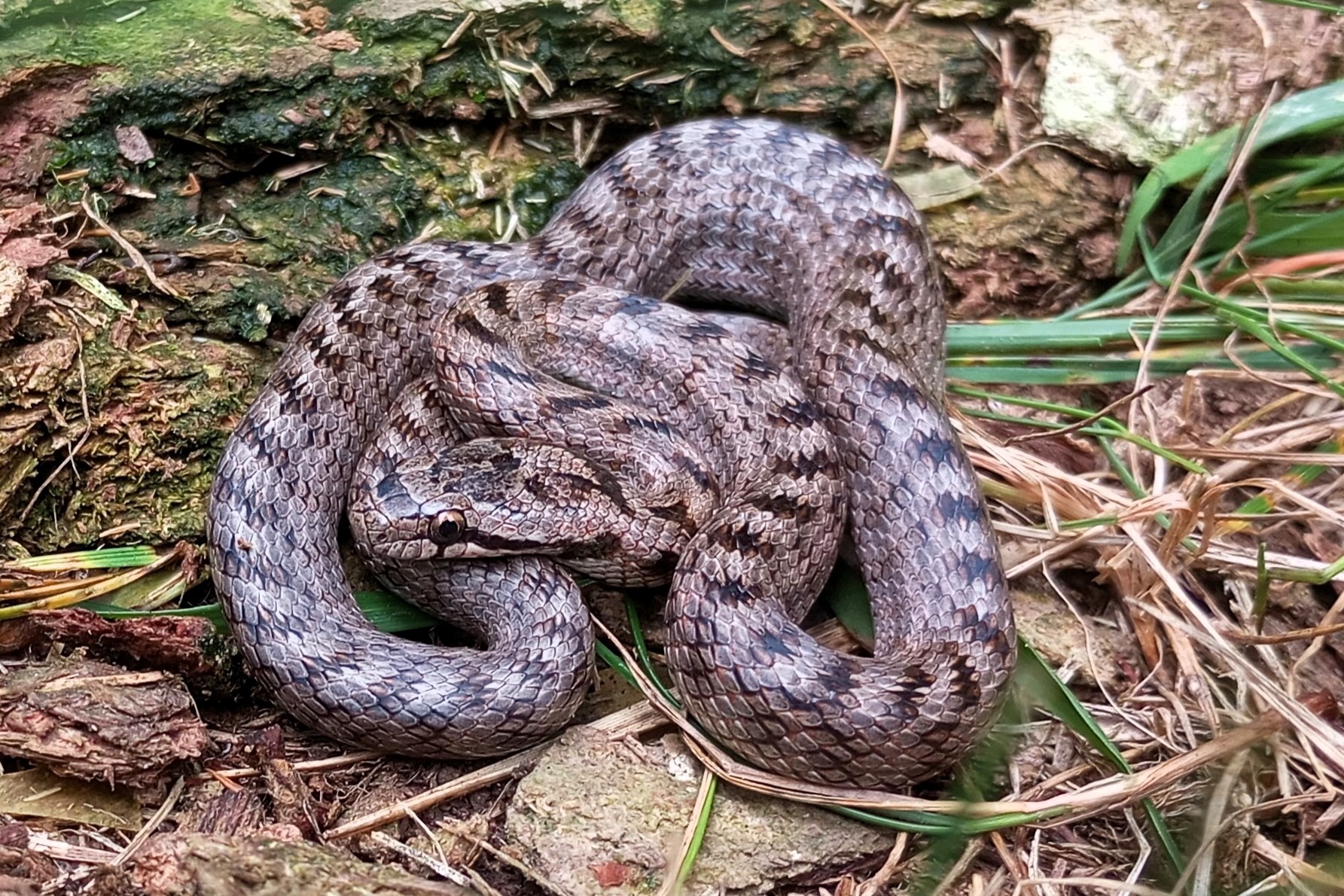
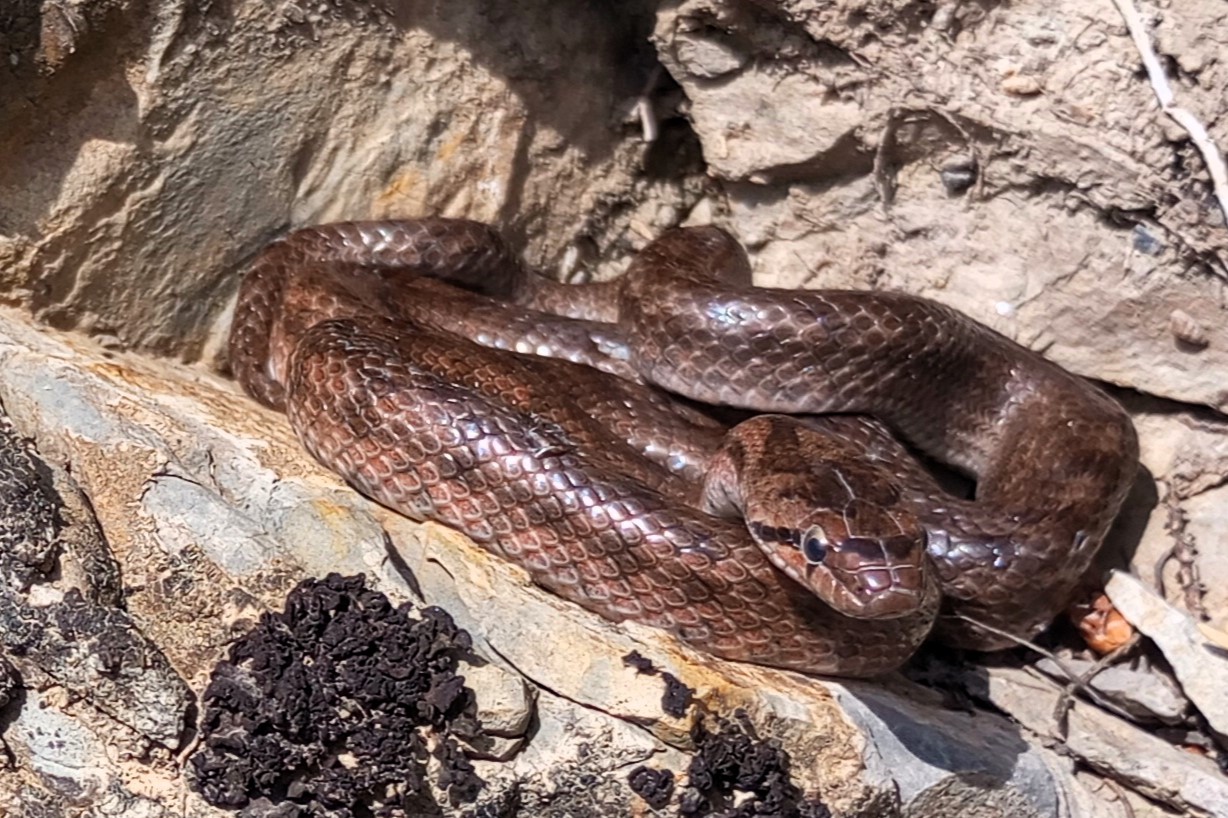
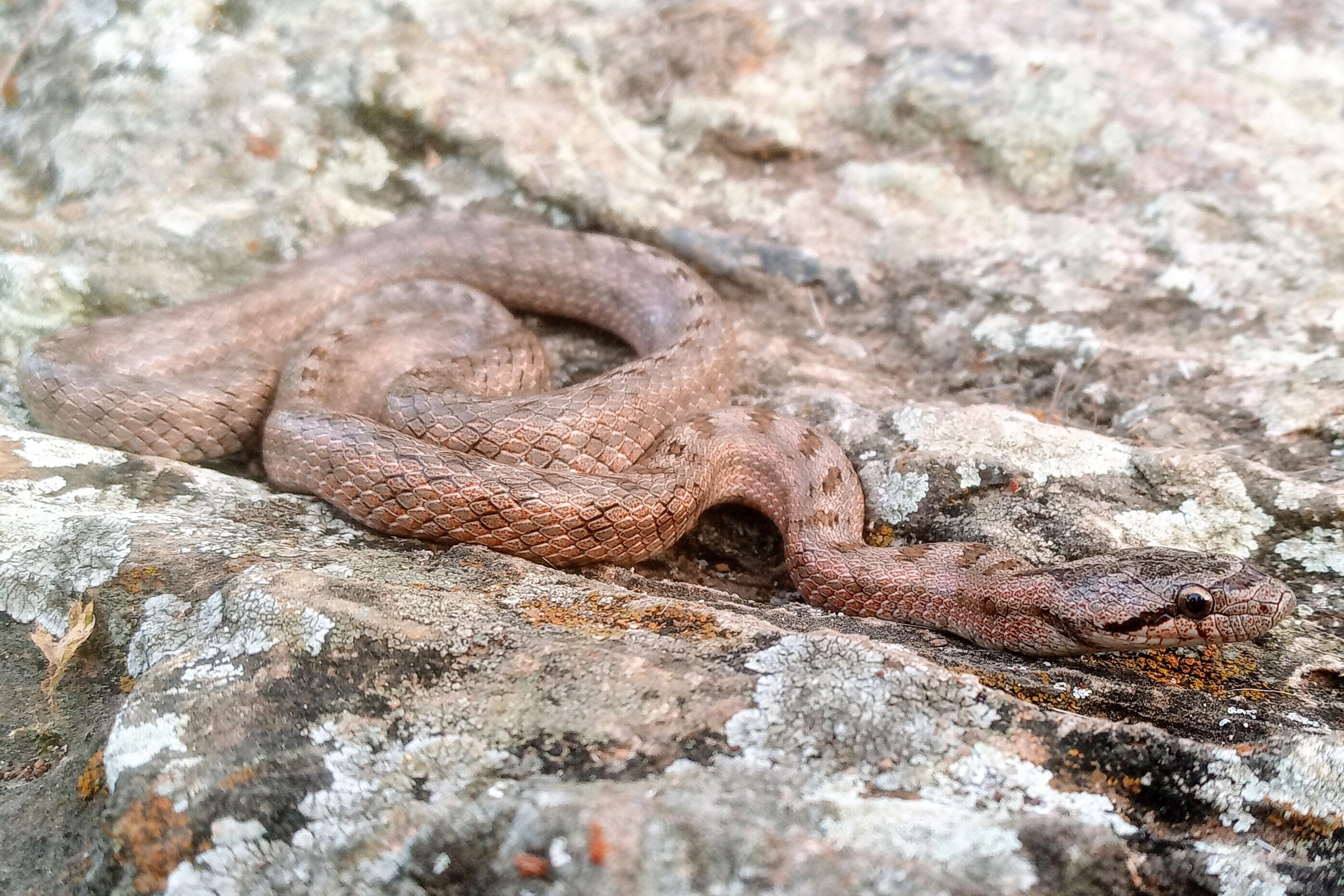
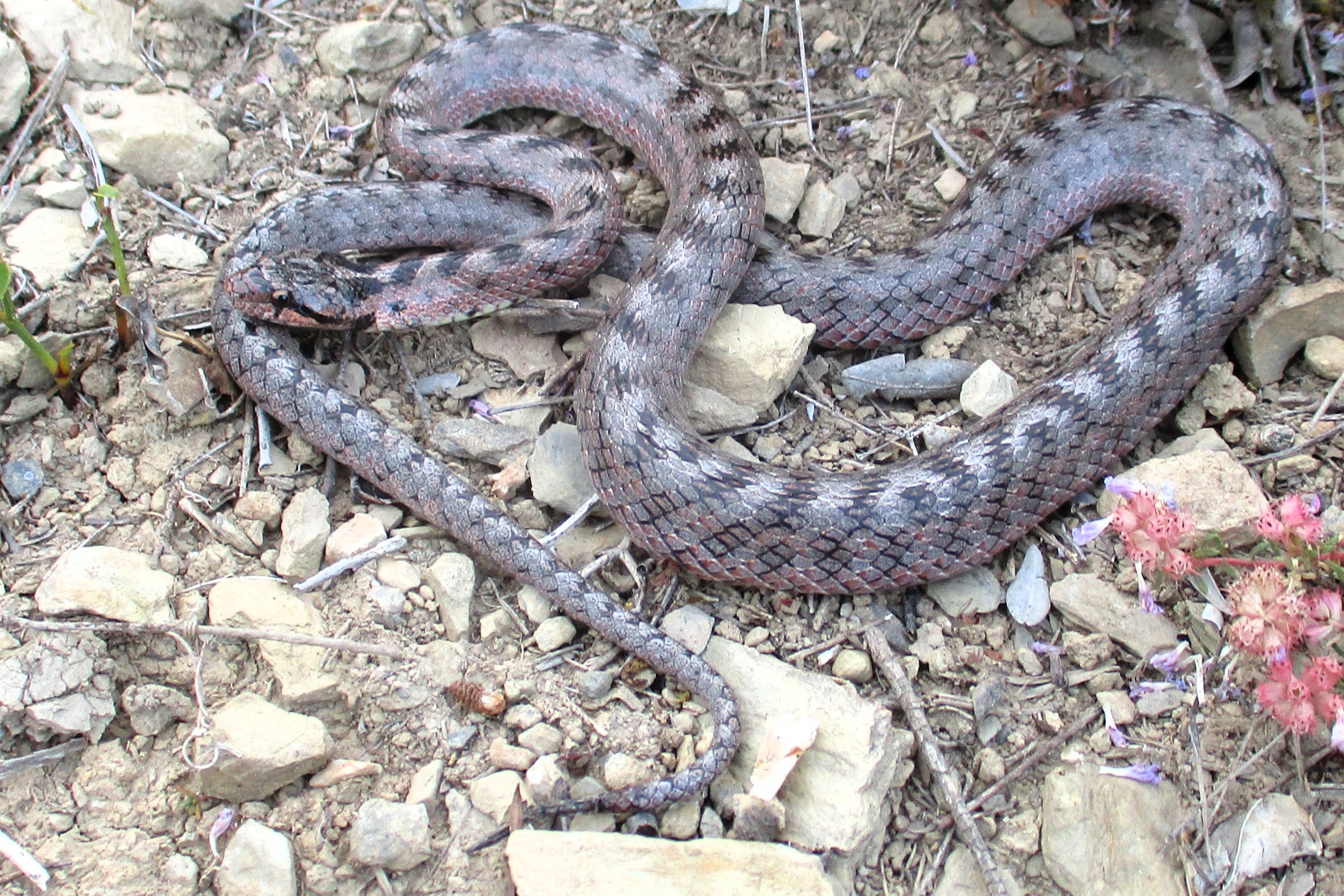
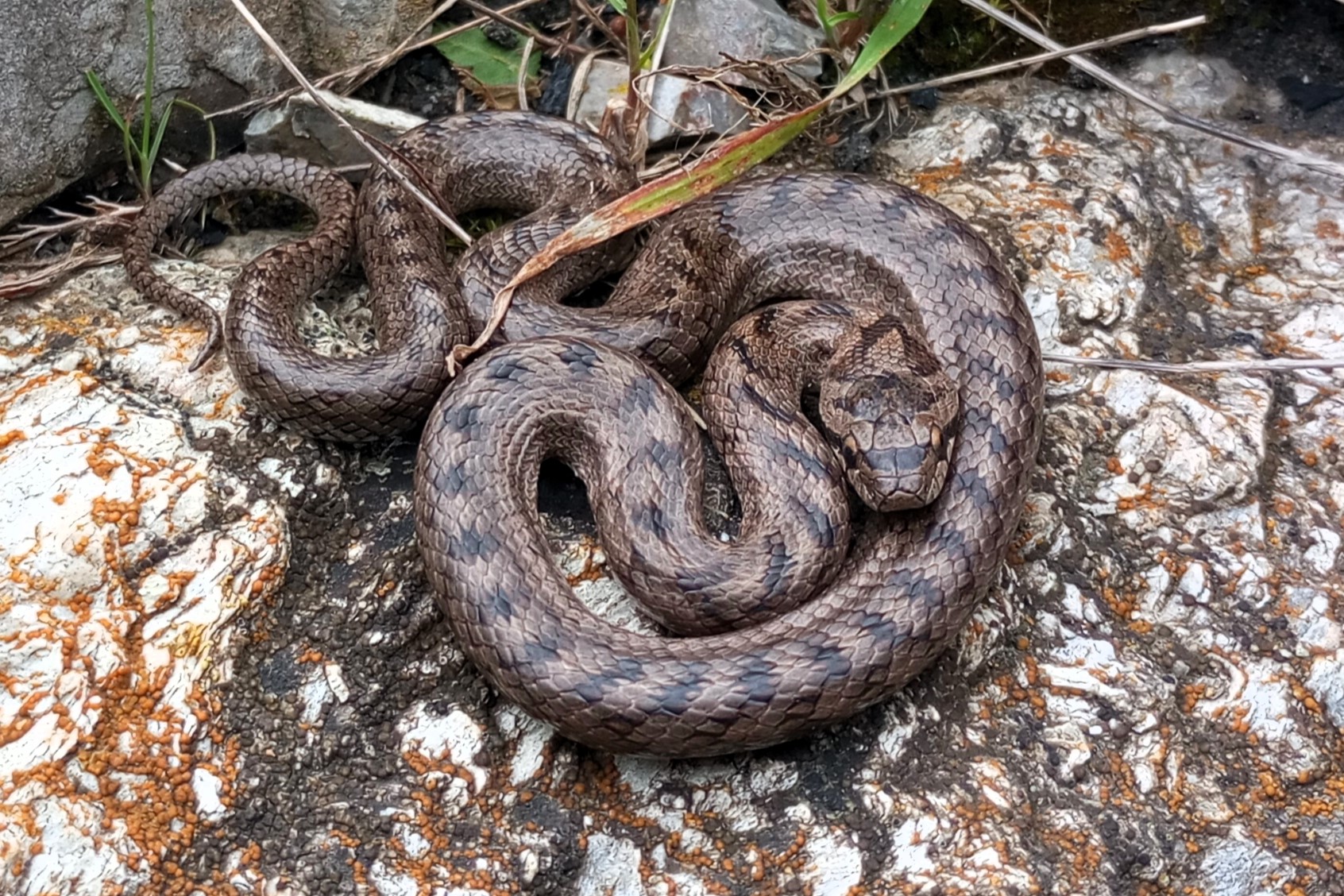
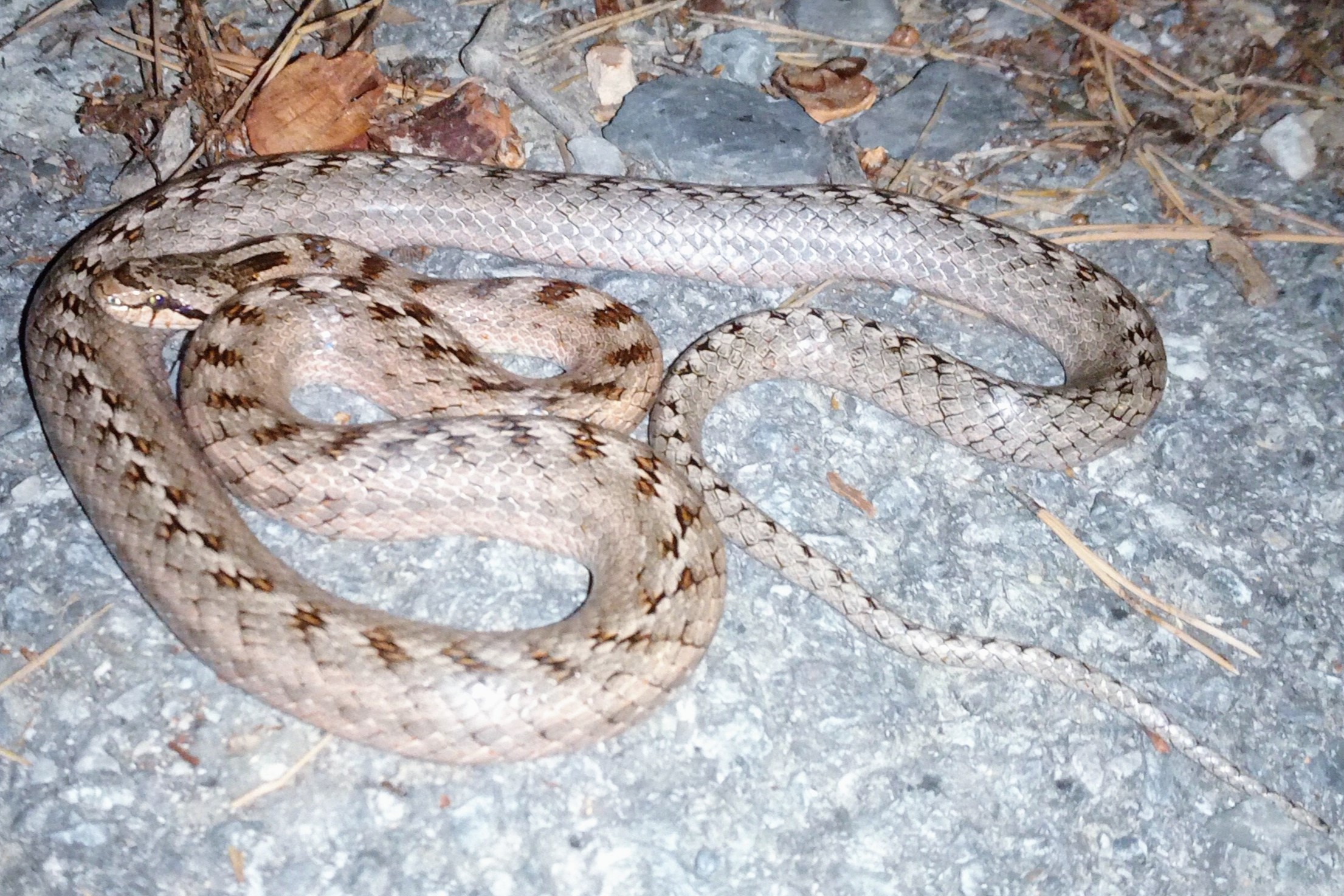

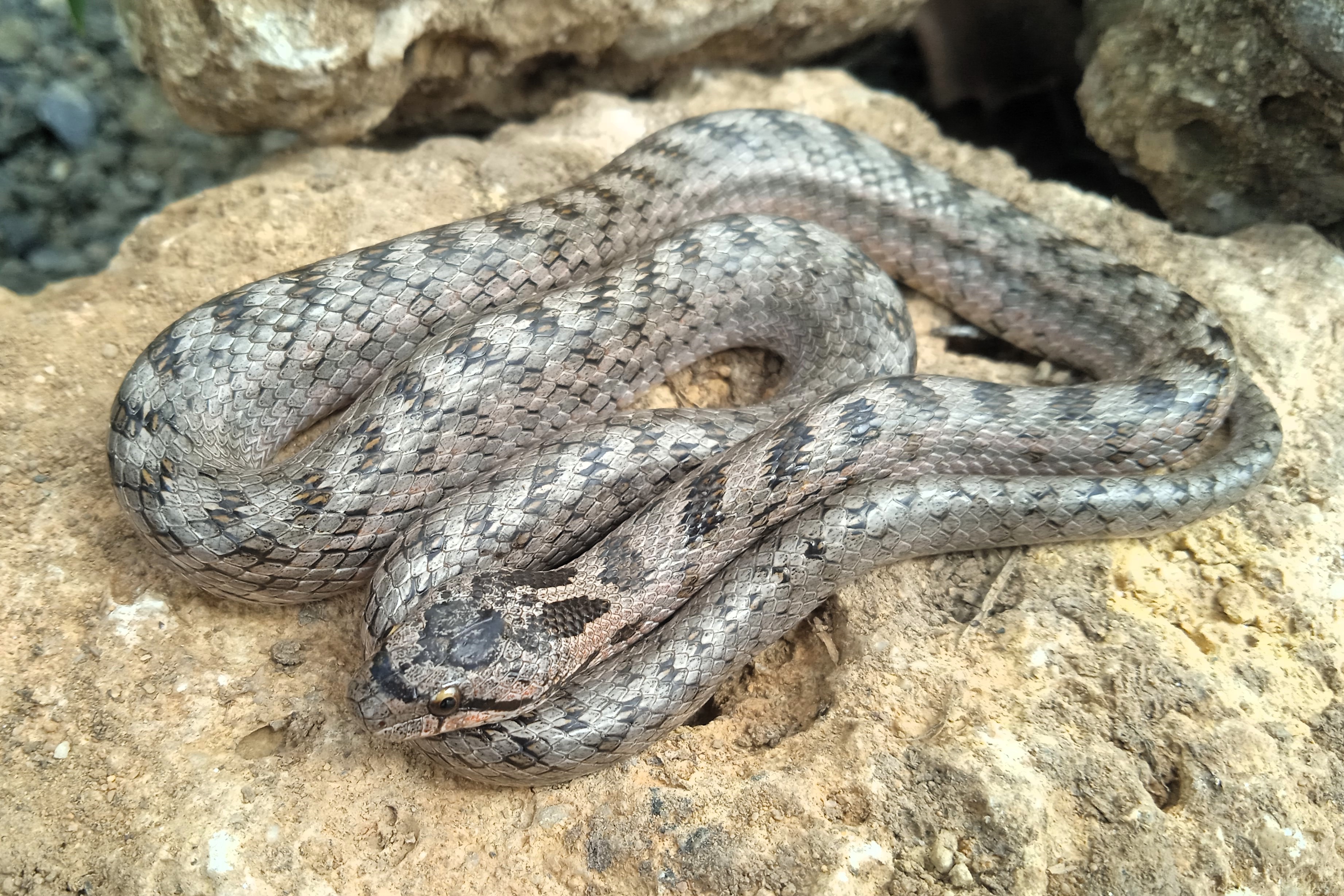
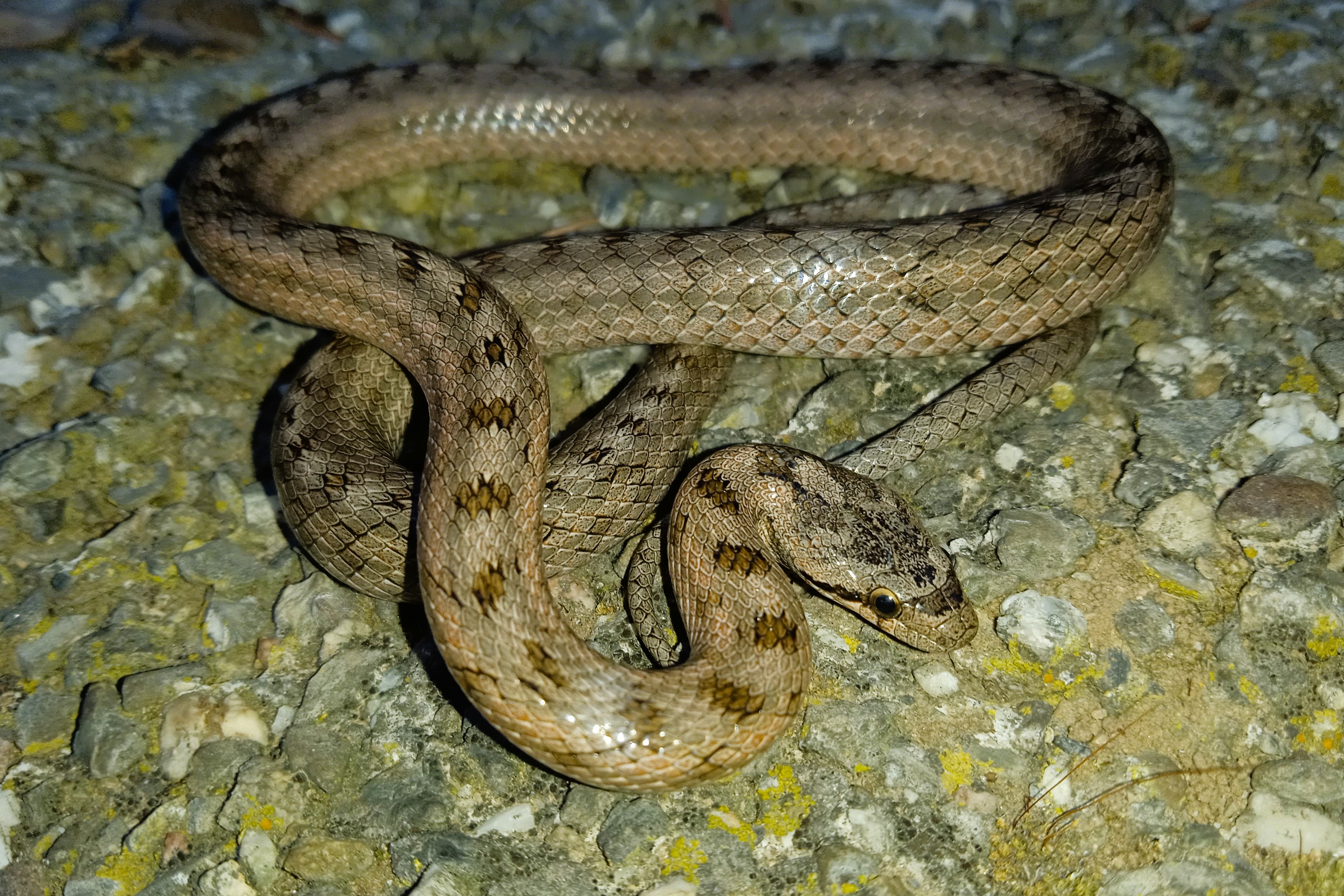
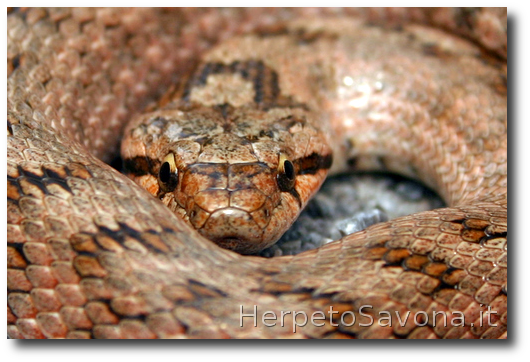
Reptilia → Squamata → Serpentes → Colubridae → Coronella → Coronella girondica
Biscia, Biscia Bagèa, Bissa Bagèa, Aspisurdu
The Southern Smooth Snake ( Coronella girondica ) is a small-to-medium-sized snake that can rarely reach 35 in (90 cm), with an agile and slender body.
Its smooth dorsal scales and varied coloration—from brown to ochre with light pinkish shades and dark-brown or blackish crossbars—make it well camouflaged among rocky areas and stone walls.
The belly is whitish, marked by typical black spots arranged in a “checkerboard” pattern, while a thin dark stripe marks the snout.
The head, not well set apart from the neck, is oval and small; eyes are round, with a yellowish iris speckled with reddish and blackish dots and a circular pupil.
Juveniles are greyer, with more contrasting markings that fade as they grow.
Sexual dimorphism is weak, though females tend to be larger.
This species has aglyphous dentition, meaning it lacks grooved or channeled venomous fangs.
A typical Mediterranean species, the Southern Smooth Snake ( Coronella girondica ) is found in the Iberian Peninsula, southern France, western North Africa, and central-southern Italy.
In the province of Savona it is extremely common from mild coastal areas up to 2,600 ft (800 m) of altitude, with the greatest abundance in the hilly and subcoastal regions of western Liguria.
It prefers thermoxerophilous environments characterized by stony substrates, arid slopes, dry stone walls, ruins, dumps, and traditional croplands.
It readily finds shelter in human-influenced areas, such as gardens or vegetable plots, provided there are hiding places and little vegetation.
Its broad adaptability allows this species to occupy both open, sunny locations and areas that are partially shaded.
The Southern Smooth Snake leads a secretive existence: its activities are mainly crepuscular or nocturnal, it moves slowly, and spends much of the day hidden.
Depending on climatic conditions, activity begins as early as March after winter hibernation, continuing until the first cold spells in November.
Reproductive habits, still partly unclear, indicate that females lay 1 to 8 eggs in sheltered spots between June and July, such as wall crevices or beneath stones; hatching occurs by mid-August.
Hatchlings, measuring 4.7–5.9 in (12–15 cm), look similar to adults but have more contrasting coloration.
Predominantly a lizard-eater, the Southern Smooth Snake feeds on lizards and geckos caught in the twilight among rocks.
Predation involves constriction: the prey is coiled in its body and held with the mouth until suffocated.
Its small size limits it to small vertebrates, such as young Western Green Lizards ( Lacerta bilineata ), while hatchlings prefer tiny wall lizards ( Podarcis muralis ) and occasionally insects.
There are many natural dangers: its main predators include birds of prey, terrestrial carnivores, and other snakes (such as the Montpellier Snake, Malpolon monspessulanus ), while competition and cannibalism are not rare.
Humans are the most severe threat: this species is often killed by mistake, as it is confused with the viper ( Vipera aspis ).
Other dangers include road mortality and habitat destruction.
Absolutely harmless, the Southern Smooth Snake rarely tries to bite: for defense, it may flatten its head to resemble a viper or foul its aggressor with foul-smelling secretions.
Elusive by nature, its presence is often underestimated, even though it is fairly common in suitable areas.
Recent molecular studies have revealed profound differences between the Southern Smooth Snake ( Coronella girondica ) and Coronella austriaca , suggesting they belong to different evolutionary lines within the Colubridae family.